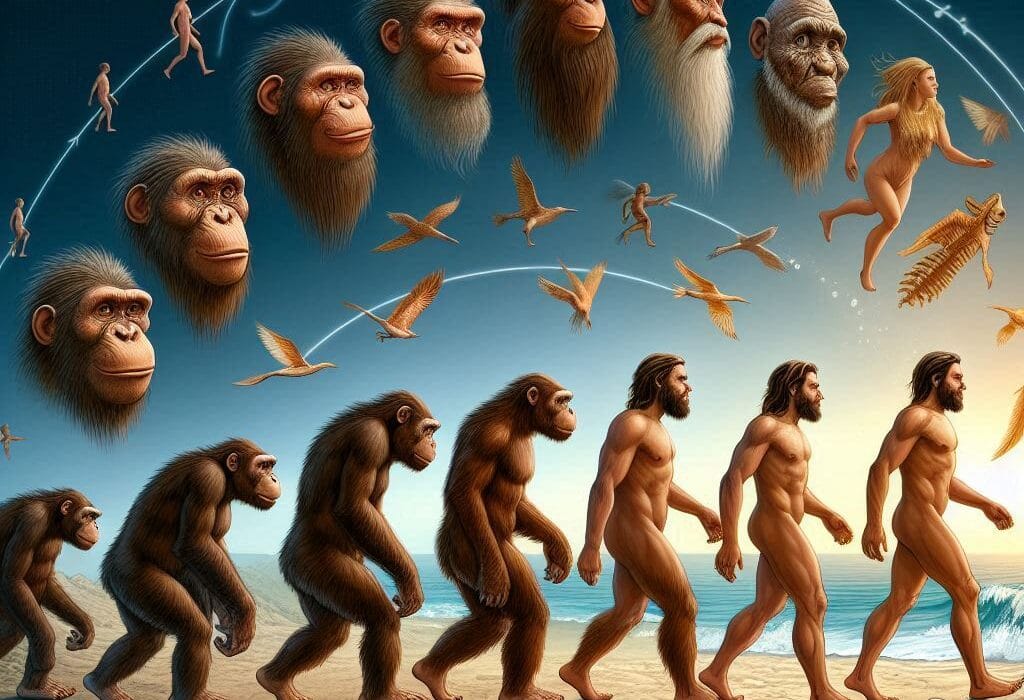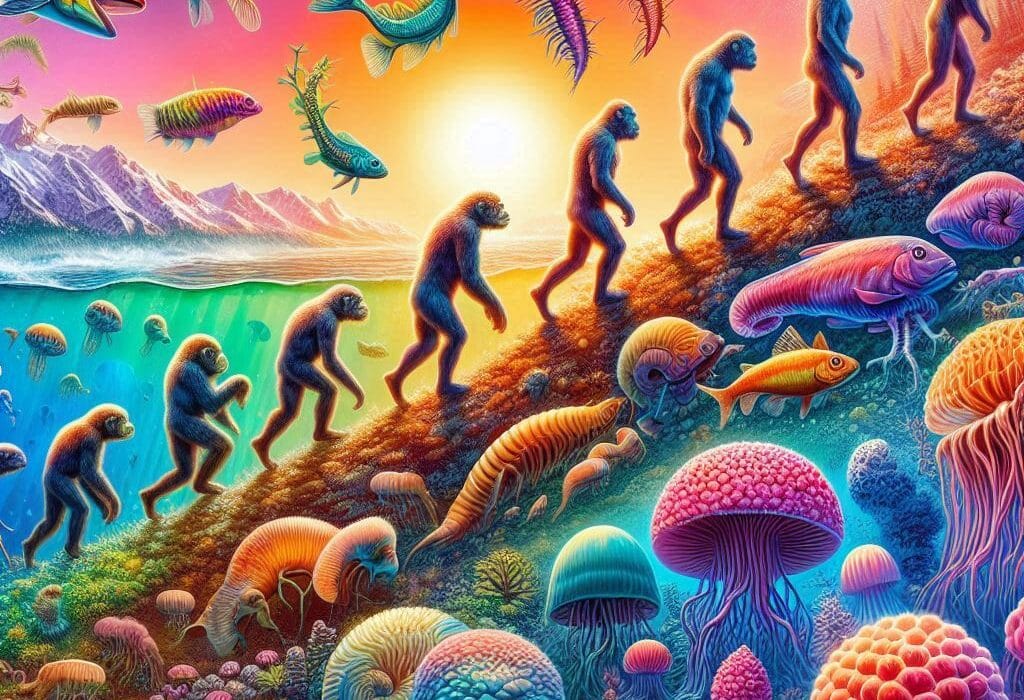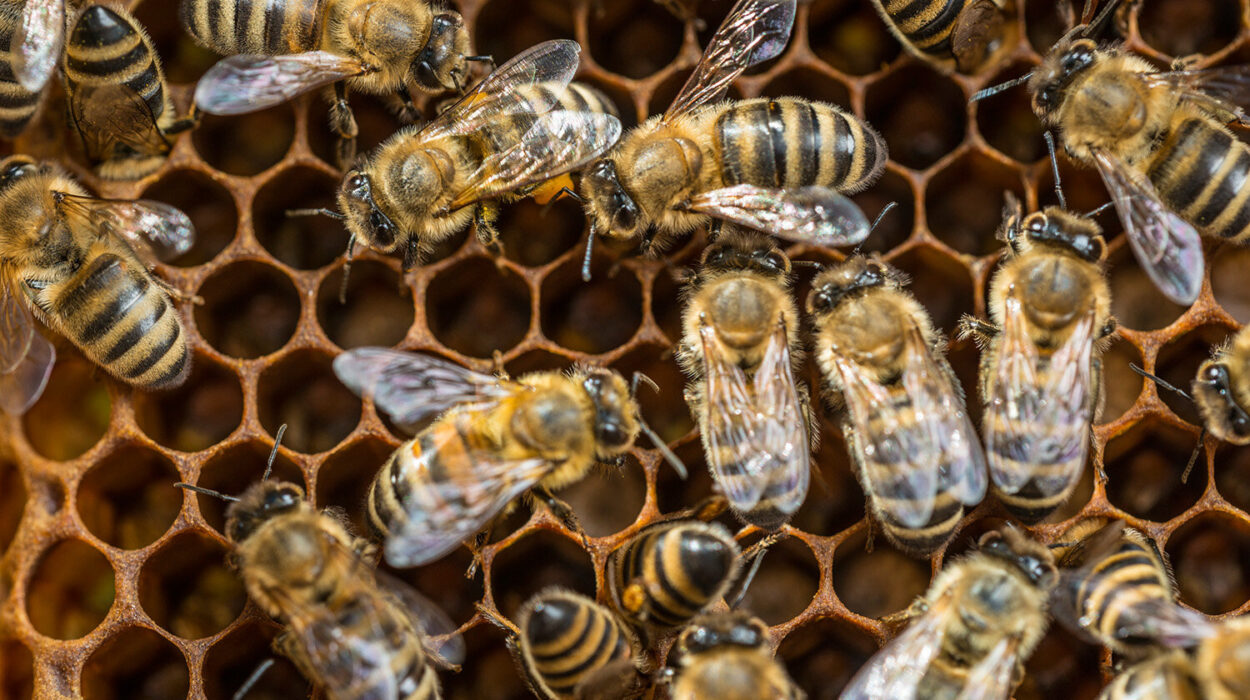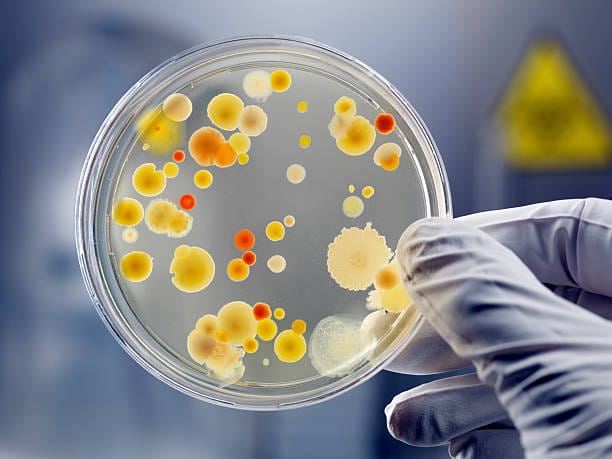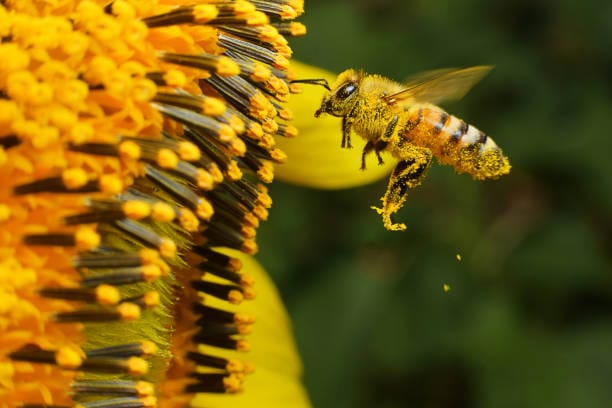Every living thing that breathes, crawls, swims, or blossoms today is part of a story far older than any myth, kingdom, or civilization. It is the story of evolution—an ancient, silent process that writes the narrative of life one generation at a time. At the heart of this grand tale is the question: how does life diversify? How does a single species split into two, or three, or millions? How do new species come to be?
The formation of new species—known as speciation—is one of nature’s greatest mysteries and triumphs. It is the engine of biodiversity, the mechanism through which life continuously reinvents itself. From the first single-celled organisms that bubbled in Earth’s primeval oceans to the sprawling complexity of rainforests and coral reefs, speciation has been the patient sculptor of life’s forms.
To understand speciation is to glimpse the machinery behind the beauty of life: the quiet, relentless push of time, chance, adaptation, and separation. It is not a moment, but a process, unfolding over thousands—sometimes millions—of years. It does not happen in laboratories or textbooks but in deserts, jungles, mountain valleys, and even within the genes of the creatures around us. It is happening still, even now, hidden in plain sight.
What Is a Species, Really?
Before we can understand how new species form, we must first answer a deceptively simple question: what is a species?
At first glance, it seems obvious. A dog is not a cat. A rose is not an oak. But when you examine nature closely, the lines blur. Species are often defined as groups of organisms that can interbreed and produce fertile offspring. This is known as the biological species concept. It works well for many animals and plants—but not all. Bacteria don’t breed the way animals do. Hybrids like mules are sterile but arise from different species. And some distinct species do interbreed in the wild, producing fertile offspring while maintaining separate identities.
Other definitions rely on genetics, physical differences, or ecological roles. But the underlying idea remains: a species is a group that shares a common gene pool and evolutionary future. It is a population that is, in some meaningful way, distinct from others. Speciation is the process that creates this distinctiveness—a slow unraveling of one evolutionary path into two.
Evolution’s Engine: Variation and Natural Selection
At the heart of evolution lies variation. No two organisms, not even identical twins, are exactly alike. Genetic variation—caused by mutations, recombination, and gene flow—provides the raw material for evolution. Some of these variations are neutral, others harmful, and a few may be beneficial in a particular environment.
Natural selection acts upon this variation. In every generation, individuals better suited to their surroundings have a greater chance of surviving and reproducing. Over time, advantageous traits accumulate. If the environment remains stable, a population may remain largely the same. But if circumstances change—if a mountain rises, a river divides, or a climate shifts—natural selection may push populations down new evolutionary paths.
Still, natural selection alone doesn’t produce new species. For that to happen, populations must diverge. They must be isolated in some way—genetically, geographically, or behaviorally—so that the flow of genes between them slows or stops. That separation sets the stage for speciation.
Allopatric Speciation: When Distance Divides
The most common and well-understood form of speciation is allopatric speciation. It begins when a population is geographically divided—by a river, mountain range, island formation, or even a shifting glacier. Once isolated, the two groups face different environments, predators, and challenges. Over time, they adapt in different ways.
Imagine a population of small rodents living across a grassy plain. One day, a new river cuts the plain in half. The rodents on either side can no longer cross. Over generations, the rodents on the drier west side evolve traits for water conservation, while those on the east, with more predators, develop better camouflage. Mutations accumulate, preferences shift, and gradually the genetic connection between them frays.
Thousands of years later, even if the river dries up, the two groups may no longer recognize each other as mates. They may not even be able to produce viable offspring. Two species now stand where once there was one.
This process has happened countless times. The Galápagos finches, made famous by Charles Darwin, are a textbook example. Isolated on different islands, they evolved different beak shapes and behaviors depending on their local environments. Though descended from a common ancestor, these birds are now a mosaic of species—each uniquely adapted, each born of separation.
Sympatric Speciation: Division Without Distance
While allopatric speciation is driven by physical separation, sympatric speciation occurs without geographic barriers. It unfolds within a single habitat, often due to ecological, behavioral, or genetic shifts.
This might sound improbable, but it is surprisingly common, especially in insects, plants, and fish. Consider a population of fruit flies that feed on different types of fruit. Some prefer apples, others hawthorns. If mating is closely tied to feeding behavior, these preferences can split the population. Apple-lovers mate with apple-lovers; hawthorn-flies with hawthorn-flies. Over time, this reproductive isolation can deepen, especially if genetic differences accumulate.
In plants, a sudden genetic change called polyploidy—where the number of chromosomes doubles—can produce instant reproductive isolation. A polyploid plant may not be able to breed with its ancestors, effectively becoming a new species in a single generation. It’s a dramatic form of speciation unique to organisms that tolerate such chromosomal changes.
Sympatric speciation may be rare in large mammals, but it reveals that isolation can be more than physical. Sometimes, the barriers are in the mind, in behavior, or even in the genome itself.
Parapatric and Peripatric Speciation: Edges and Margins
Nature is rarely neat, and speciation doesn’t always follow clear rules. Parapatric and peripatric speciation represent middle grounds.
In parapatric speciation, populations live in neighboring but distinct environments. There is no sharp barrier, but individuals on the edges are exposed to different conditions than those in the center. Gradual divergence can occur, especially if individuals are more likely to mate with neighbors than distant relatives. Over time, gene flow decreases, and two species emerge along a continuum.
Peripatric speciation, on the other hand, is like allopatric speciation on a smaller scale. A tiny population becomes isolated on the periphery of a larger one—perhaps on an island or remote mountaintop. Small populations are more vulnerable to genetic drift, where chance events can greatly alter gene frequencies. Combined with selection pressures, this can lead to rapid speciation.
Both processes show that evolution is not bound by a single path. Life’s diversity arises from the countless ways populations can shift, separate, and specialize.
The Role of Sexual Selection and Behavior
While environmental factors often drive speciation, behavior—especially mating behavior—can play an equally powerful role. Sexual selection, where individuals choose mates based on certain traits, can accelerate divergence.
Peacocks are a classic example. Their extravagant tails don’t help them survive—but they do attract mates. If a population of birds begins preferring mates with certain colors, songs, or displays, those traits will become more common. Over time, these preferences can lead to reproductive isolation.
In some cases, changes in courtship rituals, breeding seasons, or mating calls can prevent populations from interbreeding—even if they live side by side. Such behavioral isolation is a key component of many speciation events, especially in birds, frogs, and insects.
Hybrid Zones and the Fuzziness of Speciation
Speciation is often portrayed as a clean break, but in reality, it can be messy. Sometimes, diverging species continue to interbreed in hybrid zones. These zones are regions where the ranges of two populations overlap and hybrids are born.
Hybridization doesn’t always spell the end of speciation. If hybrids are weak or sterile, the species remain distinct. But if hybrids thrive and reproduce, the two groups may merge—or a new hybrid species may emerge. This has occurred in sunflowers, fish, and even some butterflies.
Hybrid zones remind us that evolution is not a rigid staircase but a dynamic process with fits, starts, and reversals. Species boundaries can be blurry, and nature doesn’t always conform to human categories.
Speciation in Real Time
Though speciation typically unfolds over millennia, there are remarkable cases where it has been observed within human lifetimes.
In 1981, on a remote Galápagos island, researchers documented the arrival of a strange male finch with a unique song and beak shape. He mated with a local finch, and their offspring were distinct enough to breed mostly among themselves. Over just a few decades, this “Big Bird” lineage became reproductively isolated—a new species born before the eyes of science.
In East Africa’s Lake Victoria, cichlid fish have exploded into hundreds of species in mere tens of thousands of years, driven by ecological niches and sexual selection. Changes in water clarity due to pollution have even blurred species boundaries, causing formerly distinct species to merge.
These modern examples show that speciation is not merely a relic of the past. It is ongoing, shaped by both ancient processes and modern human influence.
The Role of Genetics in Understanding Speciation
Modern genetics has revolutionized our understanding of speciation. DNA sequencing allows scientists to trace the ancestry of species, measure genetic divergence, and identify genes involved in reproductive isolation.
Some genes control physical traits, like beak shape or coloration. Others influence behavior, fertility, or development. As researchers uncover these genetic mechanisms, the picture of speciation becomes clearer. It is not a single switch but a cascade of changes—each altering how individuals survive, mate, and thrive.
Genomics has also revealed that gene flow doesn’t always stop abruptly. In some cases, genes can cross species boundaries long after divergence, creating a mosaic of ancestries. This has been observed in humans and Neanderthals, wolves and dogs, and many other species.
Human Evolution: A Case Study in Speciation
Our own species offers a compelling lens into speciation. Homo sapiens did not appear fully formed, but evolved gradually from earlier hominins. Fossil and genetic evidence suggest a complex web of migration, isolation, and interbreeding.
Modern humans share DNA with Neanderthals and Denisovans—once separate species with whom we interbred. We are a product of both divergence and reunion, of separation followed by limited reconnection. Our evolutionary history challenges the notion of clean breaks and highlights the tangled roots of speciation.
The Future of Speciation in a Changing World
Speciation is not just a story of the past—it is a process that continues into the future. Yet today, it faces new challenges. Climate change, habitat loss, and human activity are altering the conditions that allow species to diverge.
Fragmented habitats may accelerate allopatric speciation in some cases but may also drive species to extinction before divergence can occur. Pollution can erase reproductive barriers, collapsing biodiversity. Invasive species introduce new gene flow that blurs lines once clear.
At the same time, human technology offers new insights. Conservation genetics helps identify isolated populations on the brink of speciation. DNA tools can detect cryptic species—organisms that look identical but are genetically distinct.
Understanding speciation is not just an academic pursuit. It holds the key to preserving life’s diversity, anticipating ecological changes, and even understanding our place in nature’s grand design.
Life’s Relentless Drive to Diversify
Speciation is one of evolution’s most powerful and poetic forces. It transforms isolation into innovation, difference into destiny. Through it, life does not merely persist—it blossoms, diversifies, and astonishes.
The process is slow, patient, and often invisible. Yet its consequences are everywhere—from the dazzling plumage of tropical birds to the adaptations of desert plants, from the whisper of DNA to the thunder of mass extinctions and rebirths.
New species arise not from grand declarations, but from quiet divergence, gentle preferences, and accidental separations. And so life moves forward, not as a straight line, but as a sprawling tree of endless possibility—each branch shaped by the forces of nature and time.
As we look out across the living world, from the insects in our backyards to the coral reefs beneath the sea, we are witnessing a moment in this ongoing story. Behind every species is a tale of change, resilience, and transformation.
And though the path of evolution is slow, its creativity is boundless. The next new species may already be forming—somewhere in a forest, a lake, or perhaps even in the cells of a creature yet unknown. Nature’s imagination, it seems, never sleeps.

